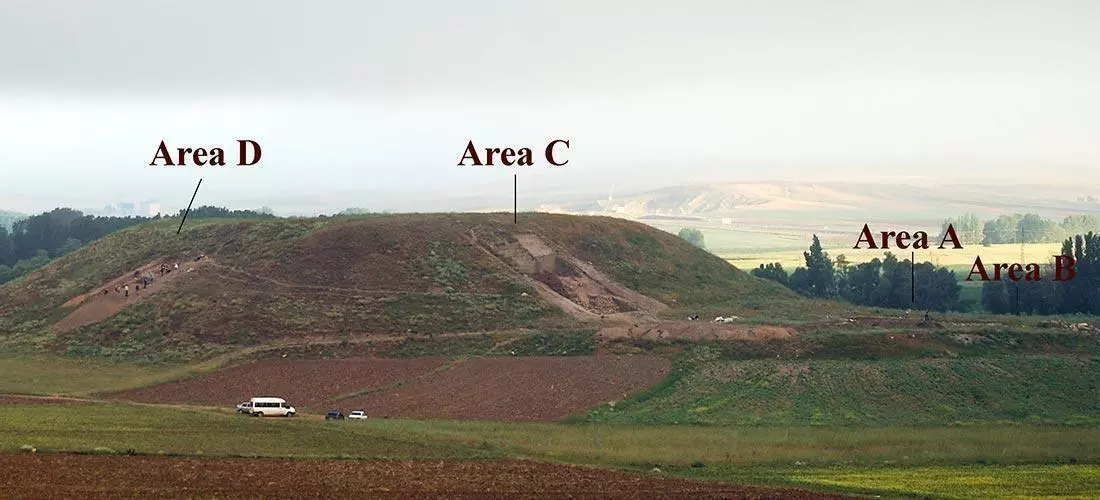The Excavations
The excavations carried out between 2013 and 2015 in the lower town and on the acropolis have brought to light two different, monumental public buildings and a portion of the terracing structures and the fortifications of the mound. Four excavation areas were opened, three on the terrace and one on the mound, enabling us to identify different phases in the site’s occupation.
In the lower town (Area A) excavations revealed the presence of an imposing building made from large stone blocks which must have been the principal temple of the town during the Hittite phase, in the Late Bronze Age (14th-12th centuries B.C.). The discovery of this large temple structure is a further element to support the proposed identification of Uşaklı with the city of Zippalanda, centre of the cult of the Storm God near Mount Daha, sacred to the same god and identified with the nearby Mount Kerkenes which dominates the landscape of Uşaklı with its characteristic and imposing contours.
Still on the terrace (Area B) a large building has been identified, the latest phase of which can be dated to the late Roman period.
Halfway down the southern slope of the acropolis (Area D), part of a Hittite palace was brought to light, with a façade of large blocks. This building, which stretched for at least 60 metres along the southern side of the mound, rested upon foundations built over a natural rise.
A large excavation area (Area C), from the summit to the foot of the acropolis, revealed the sophisticated system of fortifications of the citadel during the Iron Age (8th-6th centuries B.C.), consisting of a high sloping earthwork above a massive glacis of large stones

